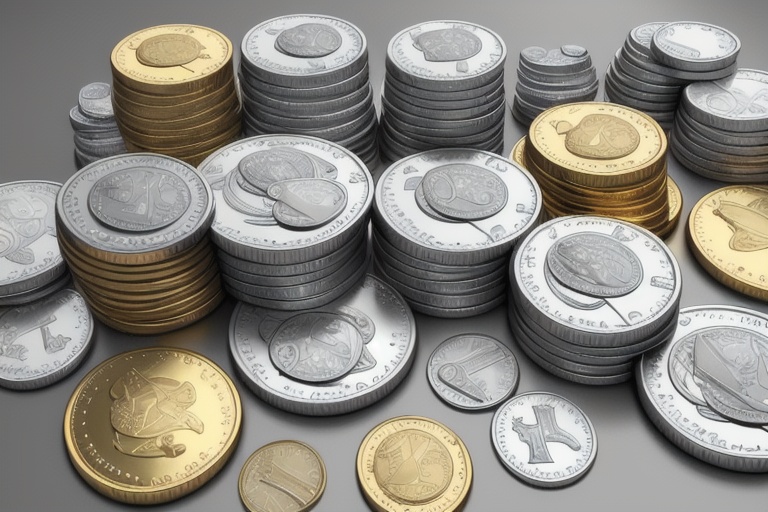The allure of key date coins within the realm of numismatics is undeniable. These coins, characterized by their relative scarcity, hold a position of prominence that ignites the curiosity and ambition of both novice and experienced collectors alike. Understanding the various attributes that contribute to a coin’s categorization as a key date is an imperative aspect of numismatic education, for it informs collectors on how rarity, condition, and historical context translate into valuation.
The allure of key date coins within the realm of numismatics is undeniable. These coins, characterized by their relative scarcity, hold a position of prominence that ignites the curiosity and ambition of both novice and experienced collectors alike. Understanding the various attributes that contribute to a coin’s categorization as a key date is an imperative aspect of numismatic education, for it informs collectors on how rarity, condition, and historical context translate into valuation.
Rarity: Mintage Numbers and Survivability
Rarity is an integral factor in the determination of a key date coin. A quintessential example is the 1794 Silver Dollar, with a recorded mintage of a mere 1,758 pieces. The intersection of limited production and attrition over the centuries has led to an extremely thin population of this fascinating piece of American coinage history. Other such examples, where mintage numbers play a crucial role in their rarity, include the 1872-S Seated Liberty dollar, which, despite a more significant mintage, becomes increasingly rare and valuable in higher grades, and the 1907 High Relief, Roman Numeral Double Eagles that, while minted to the extent of over 12,000, remain highly coveted due to their design and the demand among connoisseurs.
Condition Rarities and Mint Errors
The condition of a coin can propel it into the realm of a key date. Some coins might not be rare due to mintage figures but still obtain key date status due to scarcity in mint-condition states. Mint errors also offer a treasure-trove of rarity, as exemplified by coins like the Lincoln 1955 Doubled Die Obverse, where a minting mistake enhanced its collectability exponentially.
Exploring Key Date Coins Across Series
It is essential to provide a panoramic view of key date coins from a variety of United States coinage series. Collectors must note that the following list is not exhaustive but encompasses a broad spectrum of noteworthy examples that stand out within their respective series for being particularly challenging to obtain or exceptionally valuable:
Half Cents: From the 1793 Half Cent, notable for its inaugural year of mintage, to the various nuanced varieties, including the 1796 With and No Pole and peculiarities like the 1802/0 Reverse of 1800, half cents beckon collectors with their historical allure and rarities.
Large Cents: Encompassing the 1793 (all types) to coins with distinctive errors like the 1796 LIHERTY, Large Cents present an array of collectible treasures that vary widely in availability and price.
The Penny Series: The Lincoln Cents—with pinnacle pieces like the 1909-S VDB and the noteworthy 1914-D—alongside the Flying Eagle and Indian Head cents, each contribute their own unique key date representatives to the collectors’ narrative.
Two-Cent to Twenty-Cent Pieces: Housing rarities such as the 1864 Small Motto Two-Cent piece and the 1875-CC Twenty-Cent piece, these series offer a glimpse into the ingenuity and evolution of American coinage.
Nickels: The Jefferson Nickel, with its 1942-D/Horizontal D variation, the Indian Head (Buffalo) Nickel, featuring the 1918/7-D overdate, and earlier series like the Shield and Liberty Head Nickels, furnish collectors with challenging but rewarding pursuits.
Dimes: With the renowned 1916-D Winged Liberty (Mercury) Dime and the enigmatic 1894-S Barber Dime, dimes epitomize the blend of scarcity and desirability, especially in those series that harbor conditional rarities.
Quarters: Quarters house significant key date coins across their iterations, with notable pieces spanning from the elusive 1796 Draped Bust Small Eagle Quarter to the 1932-D Washington Quarter—a modern key date known for its low mintage.
Half Dollars: From early issues like the 1794 Flowing Hair Half Dollar to the 1919-D Walking Liberty Half Dollar, the category of half dollars delivers pieces of numismatic reverence.
Dollars: Possibly the most iconic of American coins, the Dollar series exhibits key date coins like the 1796 Draped Bust Small Eagle Dollar and the 1889-CC Morgan Dollar, both reflecting historical eminence and mercurial scarcities.
These coins, mere exemplars amid a vast monetary tableau, underscore the depth and intrigue inherent to coin collecting and valuation. Key date coins offer a tangible connection to history and inspire both admiration and scholarly pursuit within the world of numismatics.
In the endeavor to collect key date coins, it is essential for enthusiasts to embrace research, seek expertise, and exhibit patience. Trends in scarcity, market dynamics, and condition assessment must all be considered when appraising and pursuing these numismatic gems. Whether powered by the intrigue of rare mintage figures, the pursuit of condition rarities, or the allure of mint errors, the quest for key dates is a constant in the numismatic narrative, promising perpetual challenge and excitement. Remember, whether venturing into the far reaches of American coinage's nascent years or navigating the subtleties of more contemporary pieces, each key date coin holds a story—a fragment of the past etched in metal, waiting to be discovered and cherished by those who heed the call of collection.
Information for this article was gathered from the following source.


